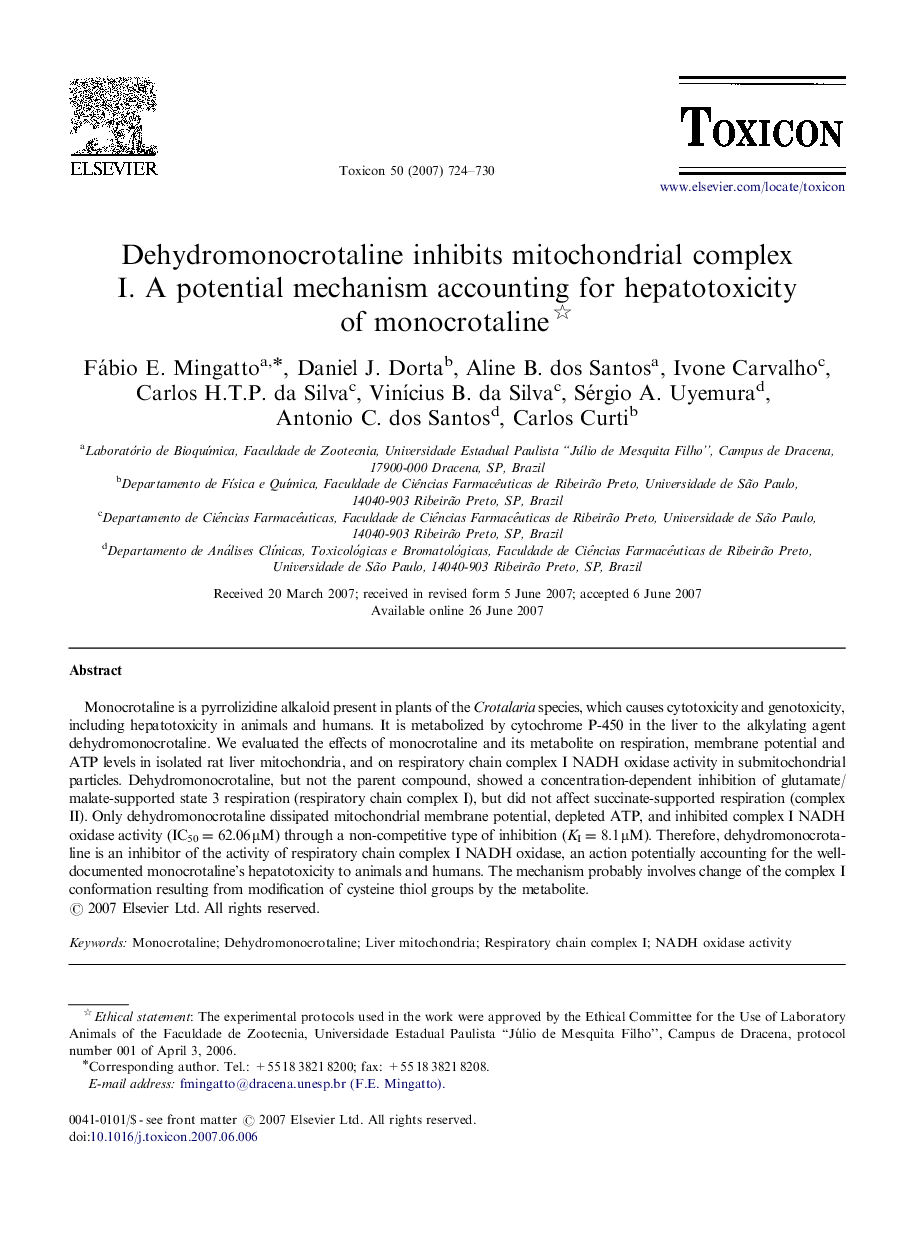| Article ID | Journal | Published Year | Pages | File Type |
|---|---|---|---|---|
| 2066809 | Toxicon | 2007 | 7 Pages |
Monocrotaline is a pyrrolizidine alkaloid present in plants of the Crotalaria species, which causes cytotoxicity and genotoxicity, including hepatotoxicity in animals and humans. It is metabolized by cytochrome P-450 in the liver to the alkylating agent dehydromonocrotaline. We evaluated the effects of monocrotaline and its metabolite on respiration, membrane potential and ATP levels in isolated rat liver mitochondria, and on respiratory chain complex I NADH oxidase activity in submitochondrial particles. Dehydromonocrotaline, but not the parent compound, showed a concentration-dependent inhibition of glutamate/malate-supported state 3 respiration (respiratory chain complex I), but did not affect succinate-supported respiration (complex II). Only dehydromonocrotaline dissipated mitochondrial membrane potential, depleted ATP, and inhibited complex I NADH oxidase activity (IC50=62.06 μM) through a non-competitive type of inhibition (KI=8.1 μM). Therefore, dehydromonocrotaline is an inhibitor of the activity of respiratory chain complex I NADH oxidase, an action potentially accounting for the well-documented monocrotaline's hepatotoxicity to animals and humans. The mechanism probably involves change of the complex I conformation resulting from modification of cysteine thiol groups by the metabolite.
